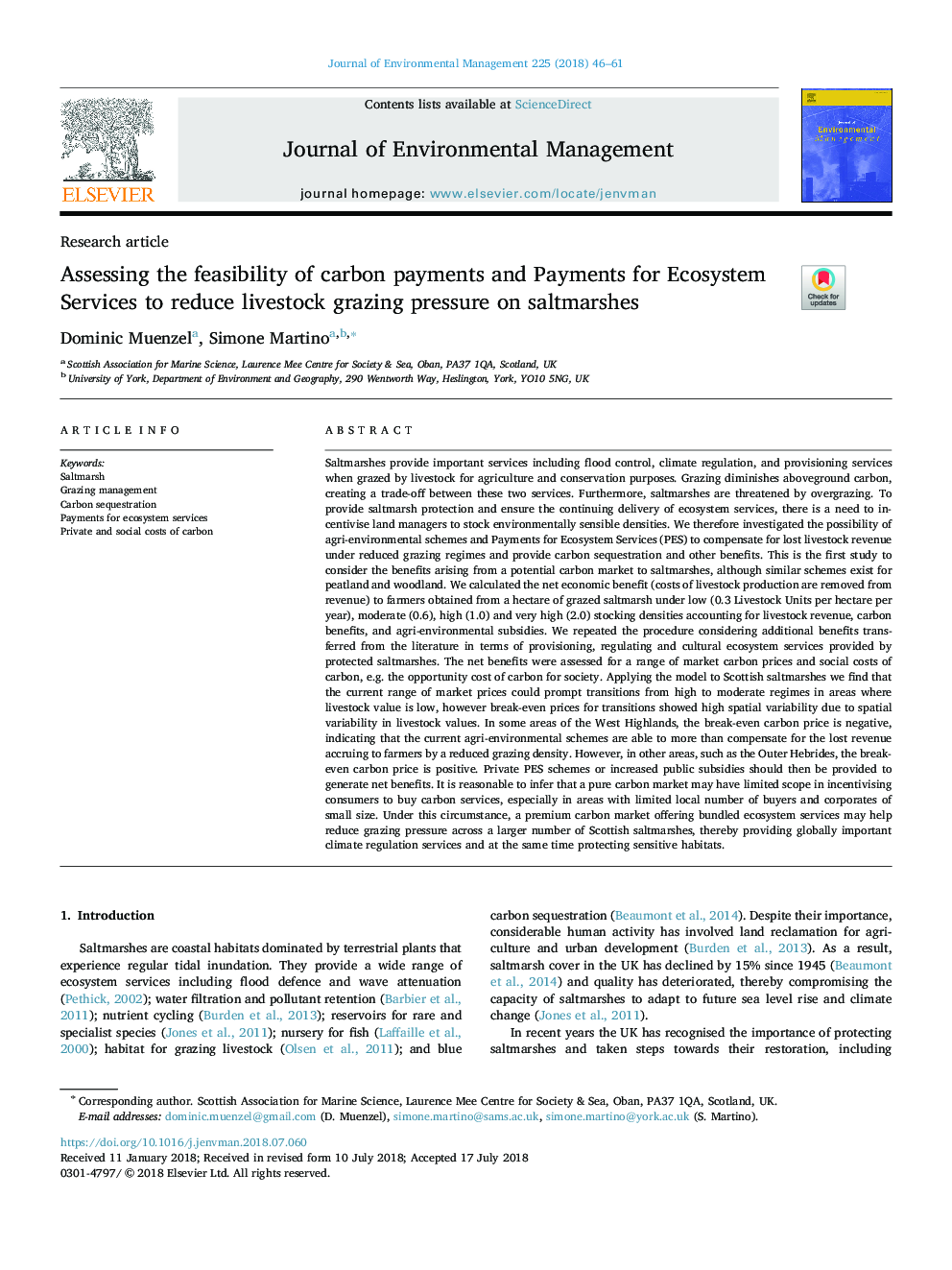| کد مقاله | کد نشریه | سال انتشار | مقاله انگلیسی | نسخه تمام متن |
|---|---|---|---|---|
| 7475442 | 1485193 | 2018 | 16 صفحه PDF | دانلود رایگان |
عنوان انگلیسی مقاله ISI
Assessing the feasibility of carbon payments and Payments for Ecosystem Services to reduce livestock grazing pressure on saltmarshes
ترجمه فارسی عنوان
ارزیابی امکان پرداخت کربن و پرداخت هزینه های خدمات اکوسیستم برای کاهش فشار بر دام های حیوانات بر روی ماهی های شور
دانلود مقاله + سفارش ترجمه
دانلود مقاله ISI انگلیسی
رایگان برای ایرانیان
کلمات کلیدی
نمکزار، مدیریت چاقی، تداخل کربن، پرداخت برای خدمات اکوسیستم، هزینه های خصوصی و اجتماعی کربن،
موضوعات مرتبط
مهندسی و علوم پایه
مهندسی انرژی
انرژی های تجدید پذیر، توسعه پایدار و محیط زیست
چکیده انگلیسی
Saltmarshes provide important services including flood control, climate regulation, and provisioning services when grazed by livestock for agriculture and conservation purposes. Grazing diminishes aboveground carbon, creating a trade-off between these two services. Furthermore, saltmarshes are threatened by overgrazing. To provide saltmarsh protection and ensure the continuing delivery of ecosystem services, there is a need to incentivise land managers to stock environmentally sensible densities. We therefore investigated the possibility of agri-environmental schemes and Payments for Ecosystem Services (PES) to compensate for lost livestock revenue under reduced grazing regimes and provide carbon sequestration and other benefits. This is the first study to consider the benefits arising from a potential carbon market to saltmarshes, although similar schemes exist for peatland and woodland. We calculated the net economic benefit (costs of livestock production are removed from revenue) to farmers obtained from a hectare of grazed saltmarsh under low (0.3 Livestock Units per hectare per year), moderate (0.6), high (1.0) and very high (2.0) stocking densities accounting for livestock revenue, carbon benefits, and agri-environmental subsidies. We repeated the procedure considering additional benefits transferred from the literature in terms of provisioning, regulating and cultural ecosystem services provided by protected saltmarshes. The net benefits were assessed for a range of market carbon prices and social costs of carbon, e.g. the opportunity cost of carbon for society. Applying the model to Scottish saltmarshes we find that the current range of market prices could prompt transitions from high to moderate regimes in areas where livestock value is low, however break-even prices for transitions showed high spatial variability due to spatial variability in livestock values. In some areas of the West Highlands, the break-even carbon price is negative, indicating that the current agri-environmental schemes are able to more than compensate for the lost revenue accruing to farmers by a reduced grazing density. However, in other areas, such as the Outer Hebrides, the break-even carbon price is positive. Private PES schemes or increased public subsidies should then be provided to generate net benefits. It is reasonable to infer that a pure carbon market may have limited scope in incentivising consumers to buy carbon services, especially in areas with limited local number of buyers and corporates of small size. Under this circumstance, a premium carbon market offering bundled ecosystem services may help reduce grazing pressure across a larger number of Scottish saltmarshes, thereby providing globally important climate regulation services and at the same time protecting sensitive habitats.
ناشر
Database: Elsevier - ScienceDirect (ساینس دایرکت)
Journal: Journal of Environmental Management - Volume 225, 1 November 2018, Pages 46-61
Journal: Journal of Environmental Management - Volume 225, 1 November 2018, Pages 46-61
نویسندگان
Dominic Muenzel, Simone Martino,
